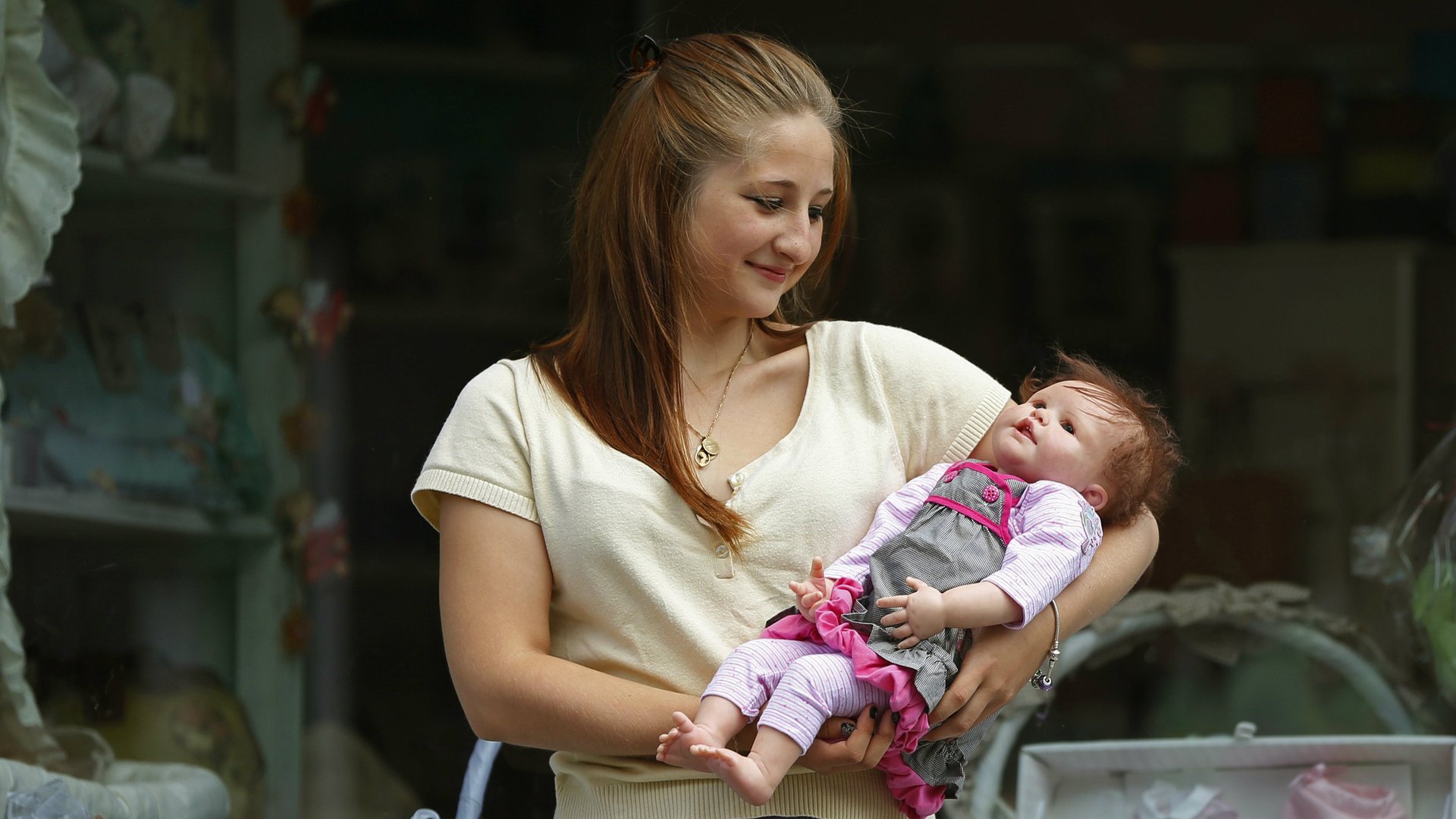Why are these creeptastic dolls making girls want to have their own real live babies?
Teen births in the US fell 57% between 1991 and 2013. While researchers can’t pinpoint the exact cause of that development, many believe that improved information, better access to birth control, and less sex among teens have contributed.


Teen births in the US fell 57% between 1991 and 2013. While researchers can’t pinpoint the exact cause of that development, many believe that improved information, better access to birth control, and less sex among teens have contributed.
Sex education would seem to play a role. The part of sex ed that includes weird, expensive dolls meant to act like real babies is definitely not a factor.
According to a multi-year year study published in the Lancet Thursday, “baby simulators” do not deter teenage girls from having babies; in fact, they appear to encourage teen pregnancy. The study, conducted in Perth, Western Australia, showed that 8% of teens who received a baby simulator intervention called VIP, or Virtual Infant Parenting, got pregnant by the time they were 20 versus 4% of the teens who didn’t get a fake baby. The study monitored 1,267 girls aged 13 to 15 who got a VIP and 1,567 who received the standard health education curriculum.
The VIP program included education sessions and “care” for a fake, life-like model of a baby that is meant to be programmed to replicate the sleeping and feeding of a baby. During the intervention, the girls reported being engaged with the program, and connecting with the health provider in charge of administering it.
The study results call into question why so many programs use fake babies to educate teenage girls about sex and pregnancy. “The results of this trial indicate that this intervention is likely to be an ineffective use of public resources aimed at teenage pregnancy prevention,” the study said. Schools in more than 89 countries currently use simulators, according to the research. RealityWorks, whose baby simulators were not used in the Perth study, says that 62% of US public schools use its baby simulators, and 90 countries.
The cost of the fake babies varies. Those used in Australia cost around AUS$1200 ($913) each when the trial began in 2003; currently, in Australia, a standard pack of 10 infant simulators along with the required equipment costs $18,245.10. RealityWorks charges $650 for each of its baby simulators.
Australia ranks sixth out of 21 countries ranked by teenage pregnancy rates, according to the OECD. In a bid to lower this, many Australian health services, schools, and non-government agencies have turned to baby simulator-based programs. Teenage pregnancy exacts a high cost on teens and society as a whole. Pregnant teens tend to have more difficult pregnancies and they lose out on education, careers and ultimately, earnings.
Professor Julie A Quinlivan from the University of Notre Dame Australia, published a commentary piece alongside the research entitled “Magic dolls: no quick fix for teenage pregnancy.” She says the dolls are ineffective for a variety of reasons. The program was aimed at girls, and boys are also involved in teen sex. In addition, teen pregnancy is an outcome, not a cause, meaning teen pregnancies are often tied to adverse life events that need to be addressed before age 15. And teenage girls who become parents tend to idealize parenthood; these dolls may foster that rather than draw on some of the harsher realities of parenthood (loss of time, freedom and money).
“No infant simulator, irrespective of its cost and programming, can convey the effects of a real child,” she wrote. “Being a parent is more than just feeding, burping, and nappy changes.”